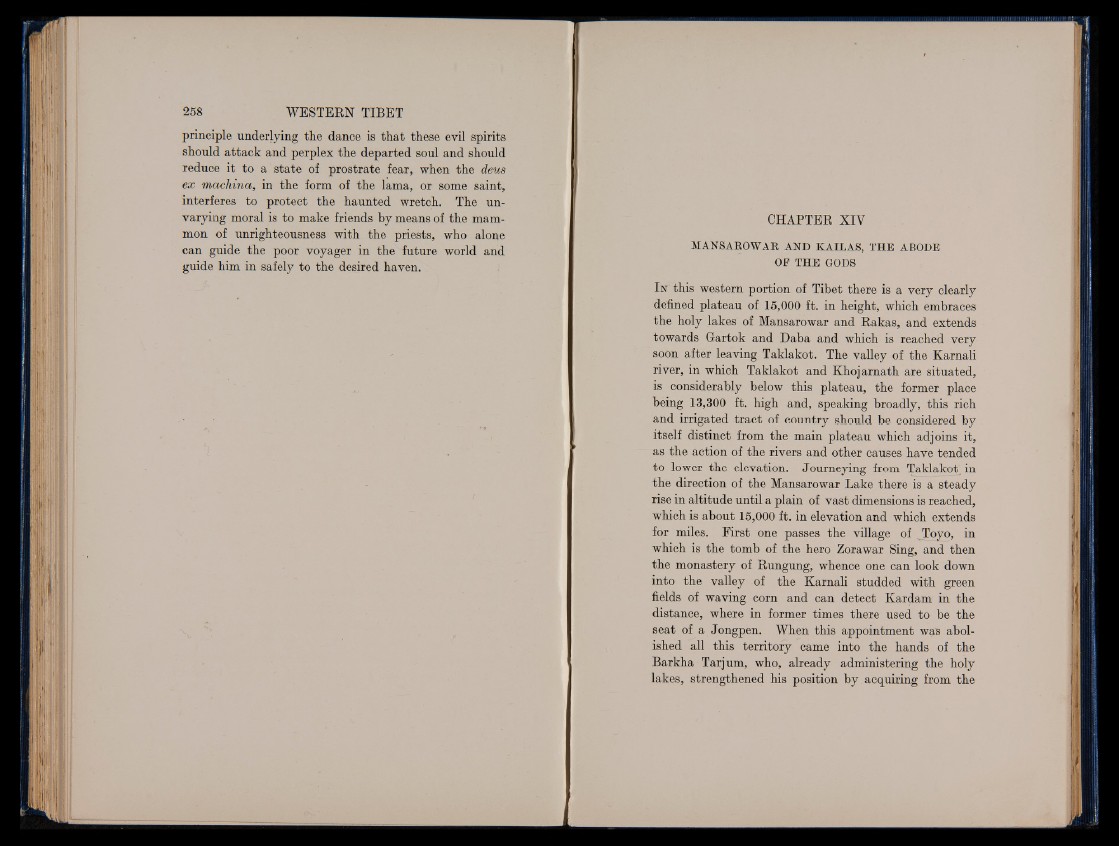
principle underlying the dance is that these evil spirits
should attack and perplex the departed soul and should
reduce it to a state of prostrate fear, when the deus
ex machina, in the form of the lama, or some saint,
interferes to protect the haunted wretch. The unvarying
moral is to make friends by means of the mammon
of unrighteousness with the priests, who alone
can guide the poor voyager in the future world and
guide him in safely to the desired haven.
CHAPTER XIV
MANSAROWAR AND KAILAS, THE ABODE
OF THE GODS
I n this western portion of Tibet there is a very clearly
defined plateau of 15,000 ft. in height, which embraces
the holy lakes of Mansarowar and Rakas, and extends
towards Gartok and Daba and which is reached very
soon after leaving Taklakot. The valley of the Karnali
river, in which Taklakot and Khojarnath are situated,
is considerably below this plateau, the former place
being 13,300 ft. high and, speaking broadly, this rich
and irrigated tract of country should be considered by
itself distinct from the main plateau which adjoins it,
as the action of the rivers and other causes have tended
to lower the elevation. Journeying from Taklakot in
the direction of the Mansarowar Lake there is a steady
rise in altitude until a plain of vast dimensions is reached,
which is about 15,000 ft. in elevation and which extends
for miles. First one passes the village of Toyo, in
which is the tomb of the hero Zorawar Sing, and then
the monastery of Rungung, whence one can look down
into the valley of the Karnali studded with green
fields of waving corn and can detect Kardam in the
distance, where in former times there used to be the
seat of a Jongpen. When this appointment was abolished
all this territory came into the hands of the
Barkha Tarjum, who, already administering the holy
lakes, strengthened his position by acquiring from the